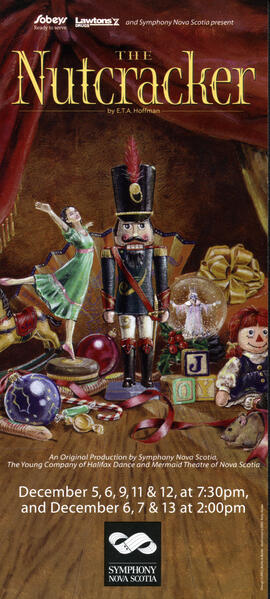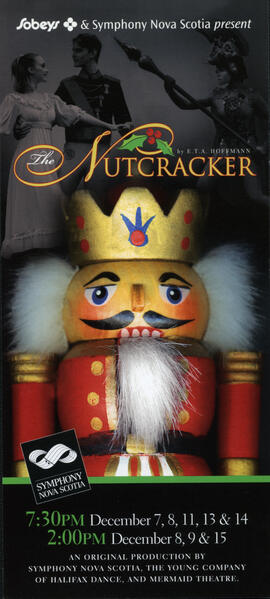Title and statement of responsibility area
Title proper
General material designation
- Graphic material
- Moving images
- Sound recording
- Textual record
Parallel title
Other title information
Title statements of responsibility
Title notes
Level of description
Repository
Reference code
Edition area
Edition statement
Edition statement of responsibility
Class of material specific details area
Statement of scale (cartographic)
Statement of projection (cartographic)
Statement of coordinates (cartographic)
Statement of scale (architectural)
Issuing jurisdiction and denomination (philatelic)
Dates of creation area
Date(s)
-
1981-2006 (Creation)
Physical description area
Physical description
Publisher's series area
Title proper of publisher's series
Parallel titles of publisher's series
Other title information of publisher's series
Statement of responsibility relating to publisher's series
Numbering within publisher's series
Note on publisher's series
Archival description area
Name of creator
Administrative history
Symphony Nova Scotia was formed in 1983 following the demise of the Atlantic Symphony Orchestra, with Brian Flemming leading the Board of Directors and Boris Brott as the first Music Director. The Symphony began with 13 permanent musicians and used contract players to fill out the orchestra when needed. By 1984, the number of permanent musicians had doubled and by 1987 the orchestra had grown to 39 members.
In 1987 Georg Tintner replaced Boris Brott as Music Director. During Tintner’s tenure from 1987 to 1994, the Symphony made six recordings, toured Ontario and Quebec, and initiated popular community outreach programs such as the annual Martin Luther King, Jr. tribute concert and the annual Nutcracker production in collaboration with Halifax Dance and Mermaid Theatre.
In 1995 the Symphony had a deficit of $900,000, which led to major restructuring, fundraising and cost-cutting, avoiding bankruptcy and achieving a balanced budget for the 1995/1996 season.
The 1996/1997 season began with a new music director, Leslie Dunner, who re-established programs cut during the budget crisis, such as school visits and free concerts, and oversaw a period of great artistic and community success. Dunner’s tenure lasted until 1999, at which point the Symphony invited six candidates to lead the orchestra throughout its seventeenth season. Simon Streatfeild was hired as the artistic advisor in 2000 and in 2002 Bernhard Gueller was appointed music director.
Custodial history
Scope and content
Fonds consists of records created by Symphony Nova Scotia in the course of its regular business activities. The majority of the records were created during the process of concert-planning, including special concerts, annual concerts, tours, and concert series. These records include artist contracts, marketing and development documents, internal memos, and correspondence with artists and sponsors.
Records also consist of internal management records, including personnel records, office management files, and the files of the Board of Directors, Executive Director, and Chief Executive Officer. The financial administration of the Symphony is documented though budgets, statements, ledgers, and tickets sales data.
The fonds also contains concert programs and promotional material such as posters, advertisements, flyers, newsletters, and other publications. The final section of the fonds consists of audiovisual and graphic material. There are audio recordings of performances and interviews of Symphony personnel as well as video recordings of advertisements and performances. The graphic material includes promotional photographs and photographs of the orchestra.
Notes area
Physical condition
Immediate source of acquisition
Arrangement
Arrangement has been imposed by the processing archivist, using the original order of the materials whenever possible. The fonds is primarily organized into series based on the title of the play. Most series are further divided into subseries. Files in each series or subseries are listed chronologically, unless otherwise noted.
Fonds is organized into series: Administration and Finance Audiovisual Material Board of Directors CEO Marketing and Development Office Manager Personnel and Productions Photographs Programs and Publications
Language of material
- English
Script of material
Location of originals
Availability of other formats
Restrictions on access
The following records are closed:
-Box 6, Folders 26 to 29, 32, 33, 39, 44, 52, 55, and 57 -Box 8, Folders 1, 4, 6, 7, and 8 -Box 9, Folders 20 and 21 -Box 10, Folders 1 to 4, 6 to 10, 13, 15 to 18, 23 to 32, 35 to 42, 44 to 48, 50 to 56, and 58 to 60 -Box 11, Folders 1 to 3, 6 to 7, 9 to 11, 14, and 17 to 22 -Box 12, Folders 1 to 2, 7 to 11, and 13 to 43 -Box 13, Folders 1 to 20 and 22 to 37 -Box 14, Folder 7 -Box 17, Folders 20 and 27 -Box 19, Folders 10 to 13 and 20 -Box 20, Folders 1, 3 to 5, 9, and 17 to 18 -Box 21, Folder 1 -Box 23, Folders 10 and 16 -Box 24, Folders 2, 4 to 5, 16, 23, and 25 -Box 25, Folders 6, 13, and 14 -Box 26, Folder 9 -Box 27, Folders 7 and 9 to 10 -Box 28, Folders 18 to 22 and 24 -Box 29, Folders 8 and 11 -Box 30, Folders 3 and 6 to 15 -Box 31, Folders 2 to 9, 10 to 29, 31, 32, and 34 to 39 -Box 32, Folders 4, 8, 10 to 14, 19, and 23 -Box 33, Folders 10, 11, 15, and 16 -Box 34, Folders 1, 9, 13, and 23 -Box 35, Folders 1 to 5, 7 to 9, and 12 -Box 36, Folders 7 to 9, 15, 20, 21, 28, 29, 31, and 33 -Box 37, Folders 1, 2, 6, 8, and 19 -Box 39, Folders 1, 7, 15 to 22, 24, and 25\ -Box 40, Folders 1, 5, 9, 10, and 12 to 16 -Box 42, Folders 1 to 5, 7, 8, 10, 12, 15, 22, and 27 -Box 43, Folders 2, 14, 15, and 17 -Box 44, Folders 1 and 5 to 7 -Box 45, Folders 1, 8, and 11 -Box 47, Folder 12 -Box 48, Folders 5, 7, 8, 12, 15, and 24 -Box 49, Folders 1 and 8 -Box 50, Folders 3, 7, and 12 -Box 51, Folders 1, 3, 8, and 11 -Box 52, Folders 9 and 31 -Box 53, Folder 33 -Box 54, Folders 4 and 28 -Box 55, Folders 15, 16, 19, 34, and 61 -Box 56, Folder 33 -Box 59, Folders 9, 17 to 21, 24, 25, and 27 -Box 60, Folders 2 to 4 and 7 -Box 61, Folders 3, 25, 34, and 38 -Box 62, Folders 5, 7, 8, 11, and 12 -Box 63, Folders 8, 16, and 18 -Box 64, Folders 7 and 8 -Box 65, Folders 2, 4, 11, and 13 -Box 68, Folders 16 and 43 -Box 69, Folders 3 and 28 -Box 70, Folders 8, 10, and 13 to 26 -Box 84, Folders 12 and 20 to 22 -Box 85, Folders 2, 4, 20, 22 to 24, 34, 37, 38, 45, 47, and 49 -Box 86, Folders 8, 10, 13, and 16 -Box 89, Folders 14 to 17 -Box 90, Folder 2 -Box 91, Folders 4, 9, 25 to 27, 29, 30, 32, 33, and 35 -Box 96, Folder 27 -Box 104, Folders 2, 3, 5, 8, 9, 13, 16, and 31 -Box 108, Folders 5, 8, and 14 -Box 109, Folders 1 to 6 and 8 -Box 110, Folders 1 and 6 -Box 111, Folder 35 -Box 112, Folders 1 and 8 -Box 113, Folder 10 -Box 115, Folders 5 to 33, 35, 40, 41, 44, and 45 -Box 116, Folders 28 and 35 to 37 -Box 118, Folder 4 -Box 121, Folder 7 -Box 122, Folder 16






